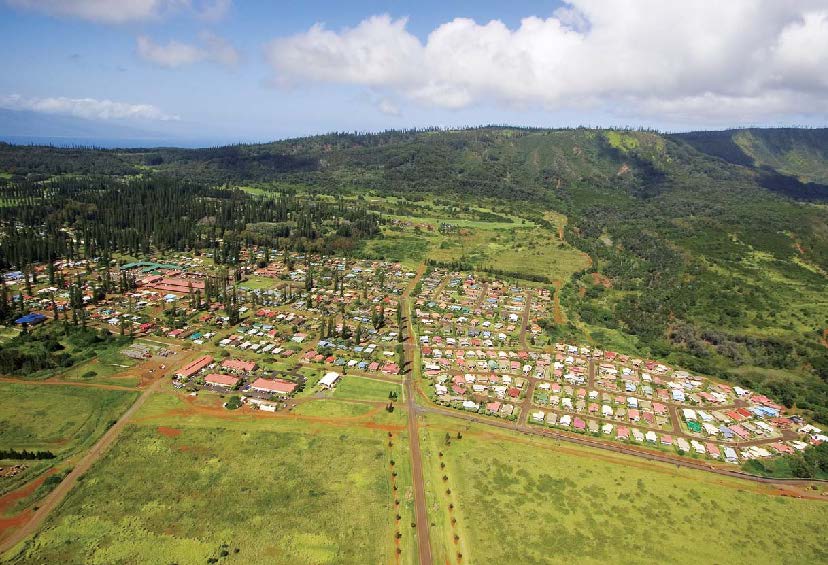Photos: Courtesy of Pacific Stock
UPDATE: 2015
Article Written By: Katrina Valcourt, HONOLULU Magazine
Much has changed on Lāna‘i since the last update we ran in 2006, the biggest, of course, being Larry Ellison’s purchase of 98 percent of the island in 2012. And though he, like previous owner David Murdock of Castle & Cooke, is investing in tourism, Ellison is also preserving historic structures. “All of the stores, all of the original buildings in the Dole Park square built between about 1924 and 1955, have been restored in their fronts, appearance and approach so that they look as they did when they were originally built, but are no longer falling apart,” says Kepā Maly, senior vice president of culture and historic preservation at Pūlama Lāna‘i. “Every community needs to have some type of economic driver. The foundation of that driver on Lāna‘i is our stories, our sense of place. The look of Lāna‘i City is part of that unique attribute.”
UPDATE: 2009
The National Trust for Historic Preservation listed Lanai City as one of the “11 Most Endangered Historic Places” in 2009 and listed development as the threat.
LISTED AS ENDANGERED IN 2006
Article Written By: Michael Keany, HONOLULU Magazine
What is it?
For 70 years, Lana‘i City was a close-knit community united by a common purpose: pineapple. After buying the island in 1922, James Dole engineered a small plantation town perfectly suited to the new agricultural industry—small enough to have no stoplights, but complete with churches, businesses, entertainment and housing.“I’m continually amazed at the way that original design fostered a sense of community, a sense of place,” says Kepa Maly, a cultural historian and Lanai native.
What threatens it?
Lanai’s last pineapple crops were harvested in 1992, and Castle & Cooke, which owns almost 98 percent of the island, has turned to tourism and real estate. Change is inevitable, but local community groups, such as Lanaians for Sensible Growth, worry that the company is putting profits before preservation. Even Nani Watanabe, Castle & Cooke’s own cultural resource manager, has concerns about the oversight of the town’s historic structures. The old firehouse and the old post office have been demolished already; she says the jailhouse looks to be next in line.“There’s so much history here, and every time a building is torn down, that’s another piece of history gone,” Watanabe says.
What can be done?
Watanabe would like to see Lanai City registered as a historic district, to ensure that the town’s iconic buildings get the protection they deserve. But she’s afraid that her employer doesn’t have as much enthusiasm for the idea, citing the company’s past failures to bring development plans for review by Maui County’s Cultural Resource Commission, on which she also sits. “I really feel that





